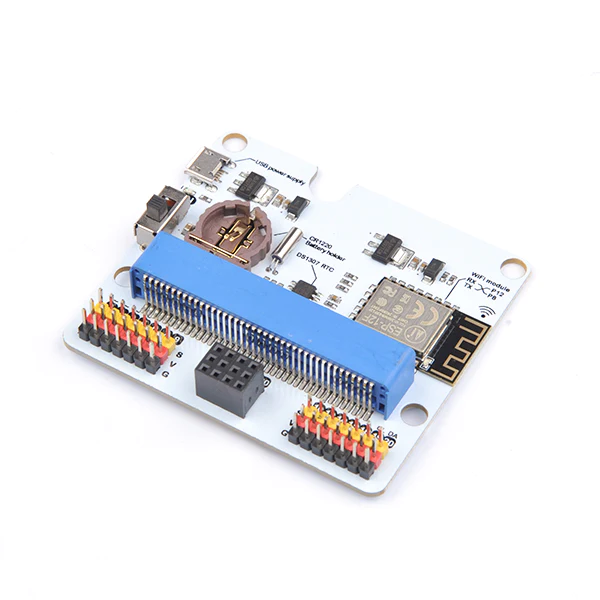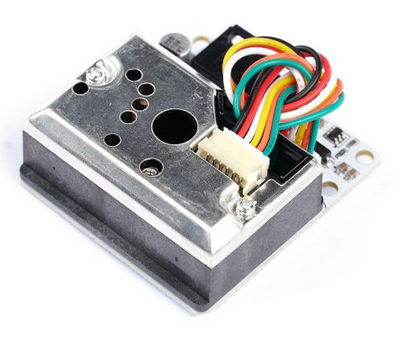Hardware Introduction
micro:bit Introduction

The micro:bit is a miniature computer designed for educational programming purposes for young people, measuring only 4cm x 5cm, but with a range of sensors and LEDs that can be used to control and monitor the physical world.
The micro:bit can be connected to a computer via a USB cable or Bluetooth and programmed using programming software. It supports a variety of programming languages, including Microsoft MakeCode, Python and JavaScript. Students can use these programming languages to write code to control the sensors and LEDs on the micro:bit to create a variety of fun projects.
The micro:bit is designed to be easy to use and suitable for beginners. It can be used for a variety of educational activities such as programming courses, science experiments, and maker activities. By using the micro:bit, students can develop creativity, problem-solving skills and teamwork.
For more information about micro:bit, please visit: micro:bit official website.
IOT:bit

The IOT:bit expansion board is an expansion board with bountiful functions designed for micro:bit. You may find more details below:
WiFi Module: The IOT:bit has a WiFi module that allows you to easily connect to a wireless network. With the WiFi module, you can enable fast communication with cloud platforms such as Thingspeak and HiveMQ to transfer data to and from the cloud. This opens up a wide range of connectivity and remote control possibilities for your smart home project.
RTC Clock Module: The IOT:bit also integrates an RTC clock module (Real Time Clock), which has a precise timing function. The independently powered RTC module continues to keep time even if the micro:bit is powered down. This provides continuous accurate time recording for your applications such as time stamps, timed tasks and event triggering.
Buzzer: The IOT:bit also includes a buzzer through which you can play melodies, sound effects or alarm sounds. The buzzer is capable of producing sounds at different frequencies, adding audible feedback and interactivity to your projects.
IO Port Extension: The IOT:bit expands all the available IO ports on the micro:bit and leads them in GVS form, making it easy for you to connect with various 3V electronic building blocks modules. You can expand various modules, such as LED lights, photosensitive sensors, servos, etc., to build a richer and more diverse smart home system.
The IOT:bit expansion board has many functions to meet your needs in smart home development. It provides WiFi connection, RTC clock, buzzer and IO port expansion, etc., bringing more possibilities to your project. Not only can you achieve fast data transmission and remote control, but you can also add sound effects and access to various sensors to make your smart home system more intelligent and interactive.
For more information about IOT:bit, please visit: IOT:bit IoT Expansion Board.
Octopus Dust Sensor

A dust sensor is an air quality sensor used to detect the concentration of fine dust particles in the air.
It uses the principle of infrared light scattering to measure the concentration of particulate matter. The sensor contains an infrared light source and a photosensitive element inside. When airborne particles pass through the sensor, they scatter infrared light and the photosensitive element measures the intensity of the scattered light. Based on the intensity of the scattered light, the sensor can estimate the concentration of airborne particles.
The dust sensor is characterised by high sensitivity and fast response. It detects particles with diameters between 0.5 and 2.5 micrometres, which are usually the most dangerous fine dust particles in the air, such as bacteria, pollen and smoke. The voltage signal output from the sensor is proportional to the concentration of the particulate matter.
This type of sensor is usually used in air purifiers, air quality monitoring equipment and industrial environmental monitoring. It can help people understand the quality of the air around them and take appropriate measures to improve the air quality.
For more information about dust sensors, welcome to visit: Octopus Dust Sensor Introduction Wiki Link.
Octopus Motor Fan

An electric motor is a device that converts electrical energy into kinetic energy based on the law of electromagnetic induction. The basic components of this motor include armature and stator. The armature coil is the motor is categorised in a very large number of ways, in this case we are using a DC motor. When a DC voltage is added to the ends of the motor, the motor will rotate, and the higher the voltage, the faster it will rotate.

For more information about motor fans, please visit: Octopus Motor Fan Introduction Wiki Link.